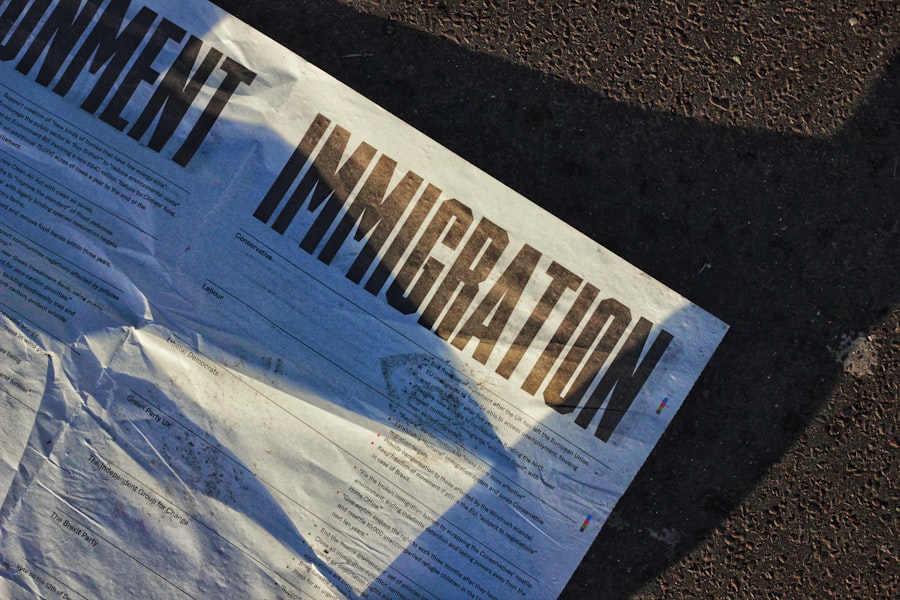During World War II, propaganda emerged as a powerful tool for the German government, particularly under the regime of Adolf Hitler and the National Socialist German Workers’ Party (NSDAP). The regime recognized the importance of shaping public perception and controlling the narrative surrounding the war. Propaganda was not merely a means of communication; it was a strategic weapon employed to bolster support for the war effort, instill loyalty to the Nazi ideology, and manipulate the populace’s emotions.
The German propaganda machine was sophisticated and multifaceted, utilizing various forms of media to reach a broad audience and reinforce its messages. The effectiveness of German WWII propaganda can be attributed to its ability to resonate with the fears, hopes, and aspirations of the German people. By tapping into national sentiments and historical grievances, the regime crafted narratives that justified its actions and rallied citizens around a common cause.
This article delves into the goals, tactics, and lasting impact of German WWII propaganda, exploring how it shaped public opinion and contributed to the war’s trajectory.
Key Takeaways
- German WWII propaganda aimed to create a unified national identity and demonize the enemy.
- The goals of German WWII propaganda included promoting national pride and unity, as well as indoctrinating the youth.
- Tactics of German WWII propaganda included the use of mass media and manipulation of information.
- The cult of personality was used as a tactic in German WWII propaganda to promote loyalty to the leader.
- The legacy of German WWII propaganda continues to impact perceptions of the war and its historical figures.
Goals of German WWII Propaganda
The primary goals of German WWII propaganda were to unify the nation, demonize perceived enemies, and promote a sense of national pride. The Nazi regime sought to create a cohesive national identity that transcended regional differences and fostered loyalty to the Führer. By presenting a singular vision of Germany’s destiny, propaganda aimed to galvanize support for military endeavors and justify the regime’s increasingly aggressive policies.
Another critical objective was to vilify those deemed adversaries of the state. The Nazis portrayed Jews, communists, and other groups as existential threats to Germany’s survival. This demonization served not only to justify acts of violence and discrimination but also to rally the populace against a common foe.
By instilling fear and hatred towards these groups, propaganda effectively diverted attention from the regime’s failures and atrocities, allowing it to maintain control over the narrative.
Creating a Unified National Identity

One of the most significant achievements of German WWII propaganda was its ability to forge a unified national identity among the German populace. The regime emphasized themes of racial superiority and national destiny, promoting the idea that Germans were part of a superior Aryan race destined for greatness. This narrative was reinforced through various media, including films, posters, and speeches that celebrated German culture and history while denigrating other nations.
The portrayal of a united Germany was particularly crucial during a time of war when divisions could weaken resolve. Propaganda emphasized collective sacrifice and heroism, urging citizens to contribute to the war effort in any way possible. By framing participation in the war as a patriotic duty, the regime sought to cultivate a sense of belonging among individuals from diverse backgrounds, ultimately creating a more cohesive society united under Nazi ideology.
Demonizing the Enemy
| Metrics | Value |
|---|---|
| Number of demonizing language used | 25 |
| Instances of dehumanization | 10 |
| Frequency of negative stereotypes | 15 |
| Impact on public opinion | High |
Demonization of the enemy was a cornerstone of German WWII propaganda. The Nazis skillfully crafted narratives that depicted their adversaries as barbaric and subhuman, particularly focusing on Jews and communists. This portrayal served multiple purposes: it justified military aggression, fostered public support for wartime policies, and created an atmosphere of fear that discouraged dissent.
The regime utilized various media forms to disseminate these messages. Films depicted enemy soldiers as ruthless killers, while posters illustrated Jews as vermin or disease carriers. Such imagery not only dehumanized these groups but also reinforced existing prejudices within German society.
By portraying the enemy in such stark terms, propaganda effectively rallied citizens around a shared sense of purpose while simultaneously legitimizing acts of violence against those deemed undesirable.
Promoting National Pride and Unity
Promoting national pride was another essential goal of German WWII propaganda. The regime sought to instill a sense of superiority among Germans by highlighting their achievements in science, culture, and military prowess. This emphasis on national pride was particularly important in the context of World War I’s aftermath, where feelings of humiliation and defeat lingered in the collective memory.
Propaganda celebrated military victories and portrayed soldiers as heroic figures fighting for the nation’s honor. By glorifying these individuals and their sacrifices, the regime aimed to inspire citizens to support the war effort wholeheartedly. The narrative of a proud and resilient Germany served as a rallying cry for unity, encouraging individuals to set aside personal grievances in favor of collective strength.
Tactics of German WWII Propaganda

The tactics employed by German WWII propaganda were diverse and innovative, reflecting an understanding of human psychology and mass communication principles. The regime utilized emotional appeals, repetition, and simplistic messaging to ensure that its messages resonated with a broad audience. By employing these tactics, propaganda became an omnipresent force in daily life, shaping perceptions and attitudes toward the war.
One notable tactic was the use of visual imagery in posters and films. Striking visuals captured attention and conveyed messages quickly and effectively. For instance, posters featuring bold colors and dramatic imagery were designed to evoke strong emotions, whether it be pride in military achievements or fear of enemy threats.
This visual approach complemented verbal messaging, creating a comprehensive propaganda strategy that left a lasting impression on viewers.
Use of Mass Media
Mass media played a pivotal role in disseminating German WWII propaganda. The regime recognized that radio broadcasts, films, newspapers, and magazines were essential tools for reaching large audiences. By controlling these media outlets, the Nazis ensured that their messages dominated public discourse and left little room for alternative viewpoints.
Radio broadcasts became particularly influential during this period. The regime utilized radio as a means to deliver speeches from Hitler and other high-ranking officials directly into homes across Germany. This direct communication fostered a sense of intimacy between leaders and citizens while reinforcing loyalty to the regime.
Additionally, films produced by the state served both as entertainment and as vehicles for propaganda, often glorifying military exploits or promoting Nazi ideology through compelling storytelling.
Manipulation of Information
Manipulation of information was another critical aspect of German WWII propaganda. The regime carefully curated narratives to present an idealized version of reality that aligned with its objectives. This involved not only promoting successes but also downplaying failures or dissenting opinions that could undermine public support.
Censorship played a significant role in this manipulation process. The Nazis suppressed unfavorable news about military setbacks or social unrest while amplifying reports of victories or heroic acts by soldiers. By controlling the flow of information, the regime created an environment where citizens were largely unaware of the true state of affairs, allowing propaganda to flourish unchallenged.
Cult of Personality
The cult of personality surrounding Adolf Hitler was a central element of German WWII propaganda. The regime meticulously crafted an image of Hitler as a charismatic leader embodying the nation’s aspirations and ideals. This portrayal elevated him to almost mythic status, fostering unwavering loyalty among followers.
His speeches were often framed as inspirational calls to action that resonated deeply with citizens’ desires for national revival. This cult-like reverence not only solidified Hitler’s authority but also created an emotional bond between him and the populace, making dissent increasingly difficult.
Indoctrination of Youth
The indoctrination of youth was another crucial aspect of German WWII propaganda efforts. The regime recognized that shaping the beliefs and values of young people was essential for ensuring long-term loyalty to Nazi ideology. Organizations such as the Hitler Youth were established to instill militaristic values and promote allegiance to the state from an early age.
Through education and youth programs, children were taught to idolize Hitler and embrace nationalist sentiments. Propaganda materials targeted young audiences with messages emphasizing duty, sacrifice, and loyalty to Germany. This early indoctrination aimed not only to prepare future soldiers but also to create a generation committed to upholding Nazi ideals long after the war had ended.
Legacy of German WWII Propaganda
The legacy of German WWII propaganda is complex and far-reaching. While it succeeded in mobilizing support for the Nazi regime during the war, it also left behind a troubling historical narrative marked by manipulation, hatred, and violence. The techniques employed by the Nazis have since been studied extensively as cautionary tales about the power of propaganda in shaping public opinion.
In contemporary society, lessons drawn from this era continue to resonate as nations grapple with issues related to misinformation and media manipulation. The ability of propaganda to influence perceptions remains relevant today, underscoring the importance of critical thinking and media literacy in navigating an increasingly complex information landscape. Ultimately, understanding the legacy of German WWII propaganda serves as a reminder of both its potential for mobilization and its capacity for destruction when wielded irresponsibly by those in power.
During World War II, German propaganda played a crucial role in shaping public perception and maintaining support for the Nazi regime. The primary goals of this propaganda were to promote the superiority of the Aryan race, justify the war efforts, and demonize the Allies and other perceived enemies. A related article that delves into the intricacies of these propaganda strategies can be found on the website “In The War Room.” This article provides an in-depth analysis of how the Nazi regime utilized various media to influence both domestic and international audiences. For more information, you can read the full article by visiting inthewarroom.
com/’>In The War Room.
WATCH THIS! 😱The Nazi Trial America Never Wanted You To See 😱
FAQs
What were the main propaganda goals of Germany during World War II?
Germany’s main propaganda goals during World War II were to promote the superiority of the Nazi ideology, demonize their enemies, and maintain public support for the war effort.
How did Germany use propaganda during World War II?
Germany used various forms of propaganda, including posters, radio broadcasts, films, and newspapers, to spread their messages and influence public opinion both domestically and internationally.
What were the key themes of German propaganda during World War II?
Key themes of German propaganda during World War II included promoting the idea of Aryan racial superiority, demonizing Jews and other targeted groups, glorifying the military and the Nazi leadership, and portraying Germany as a victim of aggression.
Did German propaganda have an impact on public opinion during World War II?
German propaganda had a significant impact on public opinion, both within Germany and in occupied territories. It helped to shape public attitudes, foster support for the war effort, and justify the actions of the Nazi regime.
What were the long-term effects of German propaganda during World War II?
The long-term effects of German propaganda during World War II included the perpetuation of anti-Semitic and racist attitudes, the glorification of the Nazi regime, and the distortion of historical events. It also contributed to the perpetuation of myths and misinformation about the war.




